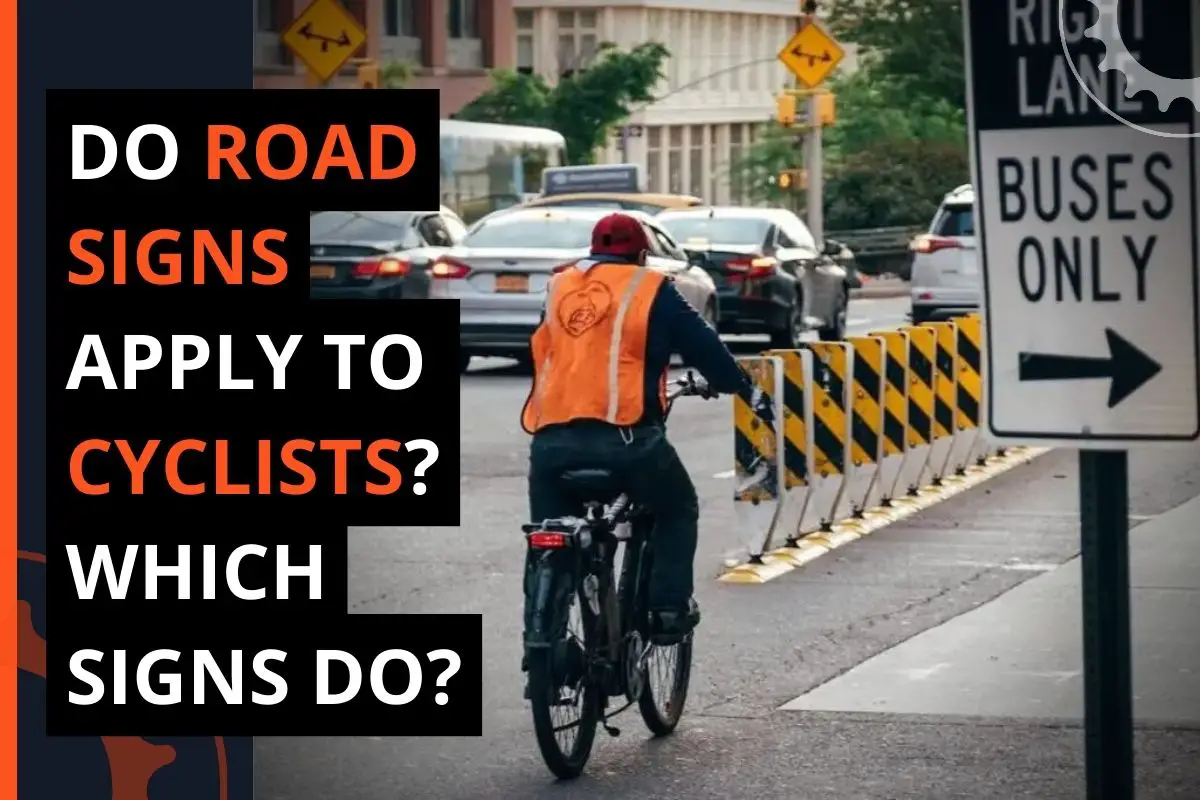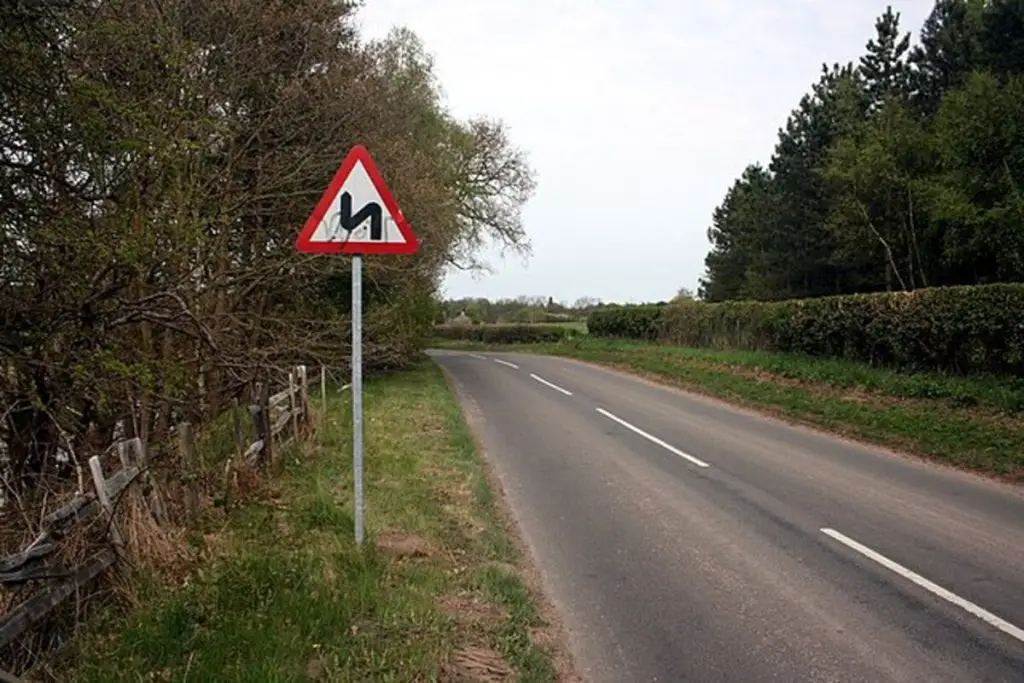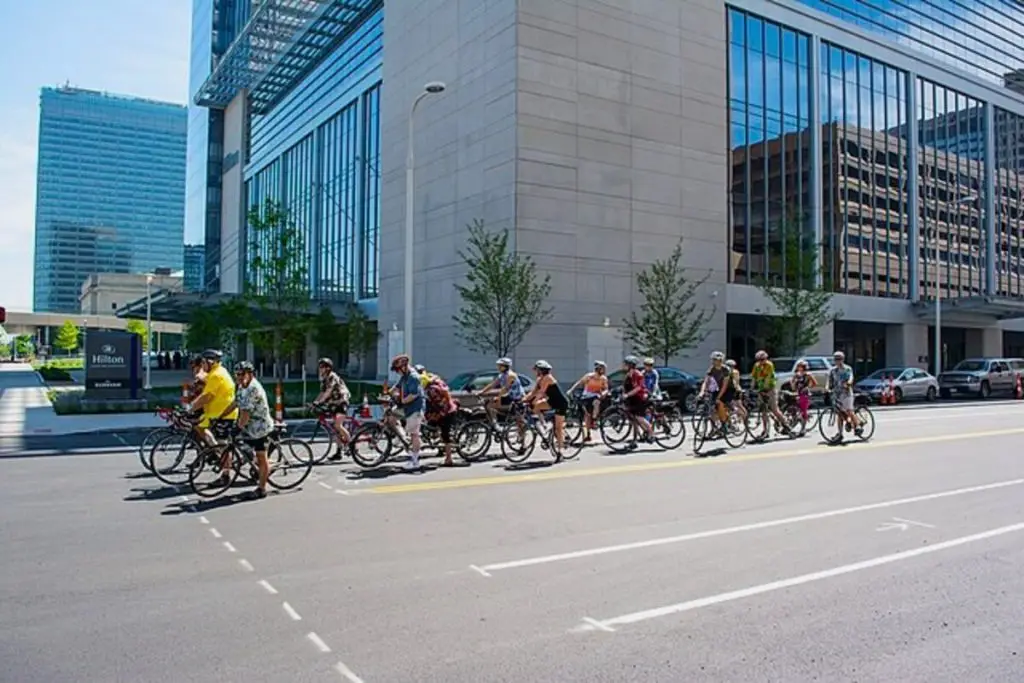Do road signs apply to cyclists? This question has been plaguing cyclists for years, and I’m here to help you finally put it to rest. In this post, we’ll cover everything you need to know about road signs, laws, and regulations that apply to cyclists. We’ll explore the different types of road signs you might encounter on your cycling journey and what they mean for you as a cyclist.
But wait, there’s more! We’ll also dive into the laws and regulations that you need to follow to stay safe and avoid any pesky fines. So sit back, relax, and let’s tackle the question that has been plaguing the cycling community for far too long.
Do road signs apply to cyclists? Yes, road signs do apply to cyclists. They must obey the same road signs as motorists, including stop signs, yield signs, and one-way signs, among others. It’s essential for cyclists to understand and follow road signs to stay safe on the road. Failing to do so could result in fines or, worse, accidents.
Which road signs apply to cyclists?
Road signs provide cyclists with valuable information about road conditions, potential hazards, and general guidance. Cyclists should be aware of and follow various types of road signs to ensure their safety and that of others on the road. Road signs that apply to cyclists include:

1. Bicycle-specific signs
These signs are specifically designed for cyclists and often feature a bicycle symbol. They may indicate bike lanes, bike route directions, or shared paths for cyclists and pedestrians.
These signs alert road users to potential hazards or changes in road conditions, such as sharp curves, steep hills, narrow roads, or pedestrian crossings.
2. Traffic control signs
Cyclists are required to obey traffic control signs such as stop signs, yield signs, and traffic lights. These signs apply to all road users, including cyclists.
3. Speed limit signs
Cyclists should be aware of speed limits and ride at a safe and appropriate speed for road conditions.
4. Warning signs
These signs alert road users to potential hazards or changes in road conditions, such as sharp curves, steep hills, narrow roads, or pedestrian crossings. Cyclists should pay attention to these signs and adjust their speed accordingly.

5. Regulatory signs
These signs provide important information about the rules of the road, such as one-way streets, no-entry zones, or parking restrictions. Cyclists should follow these rules just like any other road user.
6. Prohibitory signs
Some signs indicate that certain actions are prohibited, such as no U-turns or no right turns. Cyclists should pay attention to these signs before making a turn.
7. Shared lane markings (sharrows)
These markings, which feature a bicycle symbol and two chevrons, indicate that a lane is shared between cyclists and motorists. Cyclists should ride in the direction of the chevrons and be aware of their surroundings.
State Bicycle Co. Black Label 6061

State Bicycle Co. Black Label 6061
What are the cyclist road signs in the US?
Cycling is becoming an increasingly popular mode of transportation and recreation in the United States. As a result, there has been a growing need for cyclist road signs to ensure the safety of cyclists on the road.
Understanding these signs is essential for all road users, as it can help to prevent accidents and ensure that everyone stays safe. Here are some road signs for cyclists that you need to be aware of:
1. Bicycle Lane Sign (R3-17)
This sign indicates the presence of a designated bicycle lane on the road. The sign typically features a bicycle symbol and an arrow pointing in the direction of travel.
2. Bike Route Sign (D11-1)
This sign designates a specific route for bicycle traffic. It features a bicycle symbol and an arrow pointing in the direction of the bike route.

3. Shared Use Path Sign (MUTCD W11-1, W16-1P)
This sign indicates a shared path for both pedestrians and cyclists. It typically features a pedestrian and bicycle symbol.
4. Bicycle Crossing Sign (W11-1)
This sign warns motorists that they are approaching an area where cyclists may be crossing the road. It features a bicycle symbol.
5. No Bicycles Sign (R5-6)
This sign prohibits bicycle traffic in a specific area or on a particular road. It features a bicycle symbol with a red circle and slashes over it.
6. Bicycles May Use Full Lane Sign (R4-11)
This sign informs road users that bicycles are allowed to use the full lane, and motorists should expect to see cyclists occupying the travel lane. It typically features a bicycle symbol and an arrow pointing in the direction of travel.
What are road markings for cyclists?
Road markings for cyclists are painted on the road surface to provide guidance and information to both cyclists and other road users. Some common road markings for cyclists include:
1. Bicycle lanes
These lanes are designated for the exclusive use of cyclists and are typically marked with a solid white line separating them from motor vehicle lanes. They often feature a bicycle symbol and an arrow indicating the direction of travel.
2. Buffered bicycle lanes
These lanes provide additional separation between motor vehicle lanes and bicycle lanes by including a painted buffer zone. The buffer zone is marked with diagonal or horizontal lines.
3. Contraflow bicycle lanes
In some cases, a bicycle lane may be designated to allow cyclists to travel in the opposite direction of motor vehicle traffic on a one-way street. These lanes are marked with a bicycle symbol, arrows indicating the direction of travel, and a double yellow line to separate them from motor vehicle traffic.

4. Bicycle boxes
These are painted areas at intersections, usually in front of the motor vehicle stop line, that provides a designated space for cyclists to wait at a red light. They are designed to increase the visibility of cyclists and reduce the risk of right-hook collisions. Bicycle boxes are typically painted green and feature a bicycle symbol and a stop line for motor vehicles.
5. Green-colored pavement
In some cases, green-colored pavement is used to highlight areas of potential conflict between cyclists and motorists, such as bike lanes through intersections, driveways, or merging areas. The green pavement emphasizes the presence of cyclists and helps increase their visibility.
These road markings are designed to create a safer environment for cyclists and promote better coexistence between different road users. It’s essential for both cyclists and motorists to understand and respect these markings to ensure road safety for everyone.
If you want even more tips and insights, watch this video called “Idaho Stop for Cyclists? Drivers Already Do It!” from the Oh The Urbanity! channel.
Conclusion
Well, folks, that’s a wrap! So, do road signs apply to cyclists? The answer is a resounding yes. As cyclists, we have a responsibility to follow the same road signs as other road users and obey the rules of the road to keep ourselves and others safe.
But did I cover everything you wanted to know? Are you still left with some burning questions? Let me know in the comments section below (I read and reply to every comment).
Remember, safety always comes first when you’re out on the road. So, whether you’re an experienced cyclist or just starting, make sure you’re up-to-date on the latest road sign rules and regulations. And if you found this article helpful, share it with a friend, and check out my full blog for more tips and tricks on cycling.
Thanks for joining me on this journey, folks. And as always, happy cycling!
Key takeaways
This article covered road signs for cyclists. Here are some key takeaways:
- Cyclists are required to follow the same road signs as other road users.
- Failing to follow road signs can result in fines or accidents, which can cause harm to oneself or others on the road.
- Cyclists must follow the rules of the road to stay safe and avoid pesky fines.
- As road users, cyclists have a responsibility to obey road signs and regulations to ensure the safety of everyone on the road.















